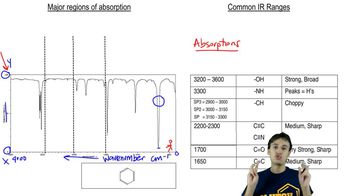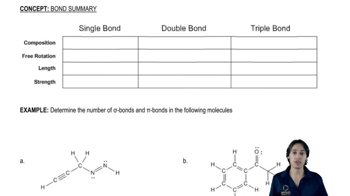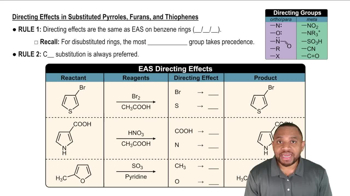Give approximate wavenumbers for the major characteristic IR absorption bands that would be given by each of the following compounds:
e.
f.

 Verified step by step guidance
Verified step by step guidance Verified video answer for a similar problem:
Verified video answer for a similar problem:



 16:47m
16:47mMaster Common IR Frequencies with a bite sized video explanation from Johnny
Start learning